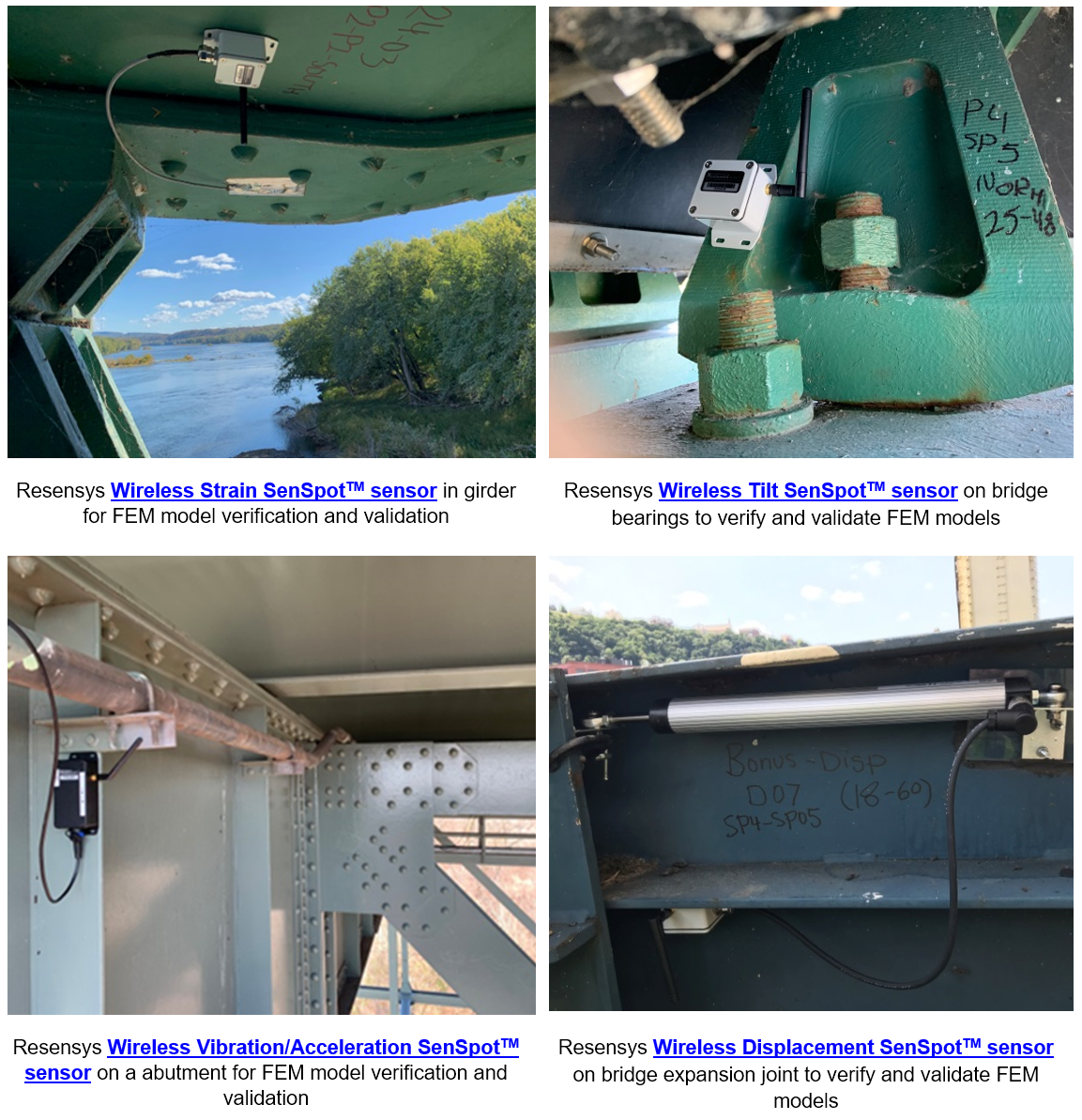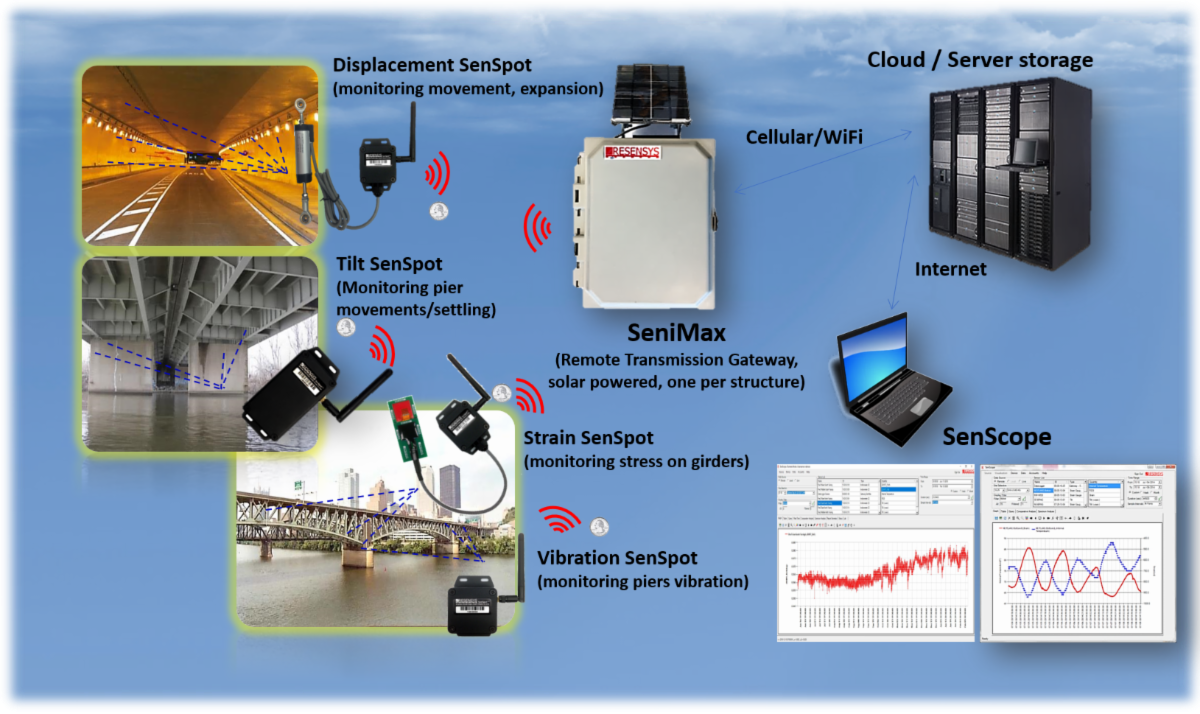Home > Applications > Bridge Monitoring > FEM Model Verification for Bridges, Buildings and other Structures
Verification and Validation (V&V) is an enabling methodology for the development of computational models that can be used to make engineering predictions with quantified confidence. Validation in finite element methods (FEM) is the process to check whether the simulation results reflect real world results. In other words, validation is the process of defining the grade to which a model is a precise representation of the real world from the perspective of the projected uses of the model. Verification is the process by which we check that the finite element analysis (FEA) was conducted properly. In other words, verification is the process of defining that a model implementation correctly represents the developer's conceptual description of the model and its solution. Verification and Validation are processes that cumulate evidence of a finite element model's correctness and accuracy for a specific scenario.
Once the finite element model is created, the solution process is initiated, which in itself involves solving large number of linear equations, introducing numerical errors at each step. While most of the errors can be neglected, there are errors due to approximations that can lead to FEA malpractices. Hence, it is always better to verify the models and validate FEA results against experimental tests. This requires a finite element solution to provide proper data against which to run experimental validations.
It is essential for engineers to verify the precision of the FEA models and also validate the outcomes against experimental tests, in order to guarantee a final model without an error. Moreover, verification and validation processes are currently required by authorities and industry to reduce time, cost, and risk associated with full-scale testing of bridge structures or any kind of structure.
To find out importance of verification and validation in FEM, it should be mentioned that FEM analysis is approximate, and it is not robust. So, possible errors in modeling, input data and boundary conditions can lead to very big errors in the results. Unfortunately, these errors can be relatively very small and difficult to identify, but they have significant and considerable effect on structure operation and service life.
For instance, using the inappropriate reference temperature for thermal strain in a structural model may simply affect the stresses by a few percent. This error will not be large enough to be noticed when comparing FEA (finite element analysis) results to a hand calculation. However, the error may be more than large enough to change some significant factors/parameters of structure/bridge such as fatigue life. These types of errors are hard to find unless someone is reviewing the analysis very carefully.

Errors are inevitable in finite element models. Also, more errors can be occurred in the complex models. FEM models validation and verification is a critical process to put in place to find these errors before they result in any damage.
This illustrates the huge effect of verification and validation of FEM model to reach convergence, and its importance in calibrating the model to a valid and effective experimental test.
The applicable, measurable and monitorable quantities in finite element method (FEM) verification and validation are strain, tilt, displacement, vibration and ambient temperature.
Resensys Wireless SenSpot sensors measurement responses and collected data (with the capability of high rate data transmission, and adjustable triggering threshold and sampling interval), are well-suited for bridge and other structure FEM verification and validation due to their accurate, reliable, and repeatable results, without need for calibration in the field. Resensys SenScope software has the capability of data visualization and data analysis (e.g. statistical analysis). So, precise and detailed data that provided by efficient Resenys devices can help clients to calibrate their FEM models very carefully and accurately to reduce possible errors in their models.
Resensys sensors also exhibit ultra-low power usage and are quick and easy to install. This allows for both short and long term use, whereby short-term uses can be easily repeated multiple times without the need for battery replacement or intra-test charging if users wish to use the products for their own experimental tests. After validation, these same sensors can also be left on the structure for long-term use (bridge structure health monitoring). After installation, SenSpot™ does not need battery replacement or any other maintenance during its entire service life.
In addition to the flexibility and accuracy benefits described above, Resensys’ wireless design is quick and easy to install because there is no additional wiring required. This reduces installation cost and time, making Resensys solutions a cost-effective way for owners to get the quality data they need for FEM verification and validation.
 More Details
More Details